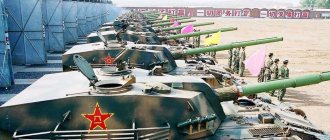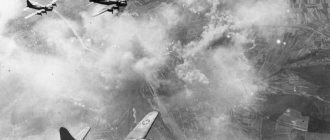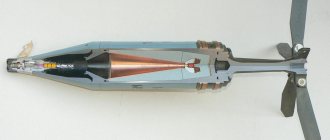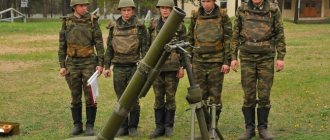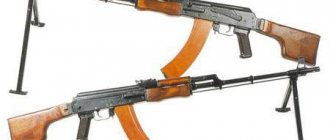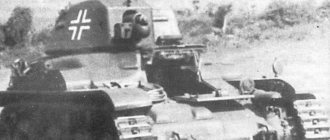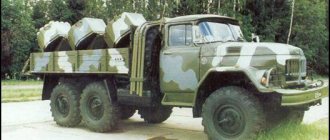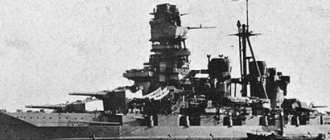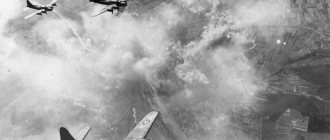A tank and a self-propelled artillery unit (SPG) are used during military operations to strike the enemy. At the same time, tanks and self-propelled guns have slightly different tasks on the battlefield. The tank is primarily used on the front line, its task is to break through the defense and support the infantry, and the self-propelled gun, being more powerful and long-range, is located behind. Such installations are designed for rapid deployment and support of long-range attacks. They are capable of shelling enemy positions and fortifications in front of tanks. Self-propelled artillery units include all armored combat vehicles with cannon artillery weapons - except tanks, armored personnel carriers, infantry fighting vehicles and infantry fighting vehicles .
Tank IS-3. Infographics Read more
“The main difference between a tank and a self-propelled artillery unit (SPG) is that these vehicles perform different tasks on the battlefield. The self-propelled gun carries artillery fire, so it is lightly armored and has no strike missions. A self-propelled gun is simply a “gun on wheels”; it should not attack, but support the advancing troops with fire from an ambush. The tank, in turn, is a heavily armored universal combat vehicle, which is designed to break through the enemy’s front line,” Ivan Konovalov, director of the Center for Strategic Conjuncture ,
Fire support
Self-propelled artillery units , following tanks or in the ranks of infantry, supported the advance of tankers and infantrymen with their fire or, conversely, sitting in ambush, fired direct fire at advancing enemy tanks. The main quality of a self-propelled gun (in our country it is usually called a “self-propelled artillery installation”) is the power and accuracy of artillery fire. Typically, a self-propelled gun had a more powerful gun than a tank of the same weight. Booking is not the most important thing for her. After all, a self-propelled gun should not rush straight into the enemy’s forward positions. Its task is to wipe out identified targets from the face of the earth, destroying them from long distances, while remaining inaccessible to enemy tank and anti-tank guns.
self-propelled guns were produced in all countries of the world . On some self-propelled guns, the gun stood openly, on others it was located in fully armored casemates (wheelhouses). Many self-propelled guns had rotating turrets and were no different in appearance from conventional tanks.
SU-76
The most common self-propelled gun in the Red Army was the SU-76 (self-propelled gun with a 76-mm cannon), created in 1943 on the basis of the T-70 light tank. Its gun was located in a semi-open wheelhouse at the rear of the hull. This light self-propelled gun, distinguished by high maneuverability and mobility, was an indispensable assistant to Soviet infantrymen. A record number of such combat vehicles were produced during the war years - almost 14 thousand. More powerful, fully armored, self-propelled units were produced on the basis of the T-34 tank. Depending on the caliber of the gun installed on them, they were called SU-85, SU-100, SU-122.
German self-propelled guns such as "Wespe" or "Hummel" were in many ways reminiscent of the Soviet SU-76. They were also semi-open, but were armed with more powerful 105- and 150-mm cannons, respectively. The Germans themselves called them self-propelled field artillery systems. In the American army, self-propelled guns became widespread, the guns of which were installed not only in the wheelhouse, but also in a rotating turret, open at the top. Outwardly, they resembled the Sherman tank, as they were made on its basis.
"Vespe"
Performance characteristics of the SU-76 self-propelled gun
— Layout diagram: combined engine-transmission and controls at the front, combat at the rear — Years of development: 1942 — Years of production: 1942—1945 — Years of operation: 1942—1953 — Number of produced, pcs.: 14,280
— Crew: 4 people
Weight of self-propelled gun SU-76
— Combat weight, t: 11.2
Overall dimensions of self-propelled gun SU-76
— Body length, mm: 5000 — Width, mm: 2740 — Height, mm: 2200 — Ground clearance, mm: 300
Reservation of self-propelled gun SU-76
— Armor type: rolled steel — Hull forehead (top), mm/deg.: 25 / 60° — Hull forehead (bottom), mm/deg.: 35 / 30° — Hull side, mm/deg.: 15 / 0 ° — Hull feed (top), mm/deg.: 10 / 20° — Hull feed (middle), mm/deg.: 15 / 0° — Hull feed (bottom), mm/deg.: 15 / 30° — Bottom, mm: 7 / 81—90° — Hull roof, mm: 7 — Cabin front, mm/deg.: 35/25° — Cabin side, mm/deg.: 10/25° — Cabin stern, mm/deg. .: 10 / 20° — Cabin roof, mm/deg.: 7
Armament of self-propelled gun SU-76
— Caliber and brand of gun: 76.2 mm ZIS-3 — Gun type: rifled — Barrel length, calibers: 41.6 — Gun ammunition: 60 — VN angles, degrees: −3…+25 — GN angles, degrees .: ±15
Engine self-propelled gun SU-76
— Engine type: twin in-line — 6-cylinder carburetor liquid-cooled — Engine power, l. pp.: 2 × 70
Speed of self-propelled gun SU-76
— Highway speed, km/h: 44
— Cruising range on the highway, km: 250 — Specific power, l. s./t: 12.5 — Suspension type: individual, torsion bar
— Overcome ascent, degrees: 30 — Overcome wall, m: 0.6 — Overcome ditch, m: 2.0 — Overcome ford, m: 0.9
Assault guns
During wars, not everything obeys classical rules. So the Sturmgeschutz became an exception to the rule. Having started the war as an infantry assault artillery gun, which had nothing at all to do with the tank forces of Germany (the crew members of the Sturmgeschutz were considered not tank crews, but artillerymen), this combat vehicle was adopted by the tank forces in the middle of the war. Moreover, if at the beginning of the war the crews of the light Sturmgeschutz were ordered not to engage in fights with enemy tanks, then at the end of the war they formed the basis of the Wehrmacht’s anti-tank units. At the same time, like other classic tanks, the latest series of Sturmgeschutz were equipped with both powerful guns and thick armor. These self-propelled guns also received machine gun armament. It was no longer just an artillery installation, merely supporting troops with fire from afar, but a real fighting machine, designed to conduct brutal close combat. In other words, a real tank, albeit a crazy one.
The Sturmgeschutz III assault gun of the initial period of the war had a short-barreled gun with a caliber of 75 mm
The development of armored vehicles during the war was subject to a single law of the development of life: the survival of the fittest. Not all combat vehicles created on the eve or even during the war were able to “survive” until its end. A typical example is the German heavy tank "Tiger", the production of which was discontinued in 1944. But the "Sturmgeschutz", on the contrary, were not only produced until the very end of the war, but their production was constantly increasing. It was the Sturmgeschutz that became the most popular armored vehicles in Germany. More than 10 thousand of them were produced. to produce turretless combat vehicles using simplified technology than “normal” tanks. And it yielded results. The Sturmgeschutz may not have been as good as the T-IV. But two Sturmgeschutz on the battlefield were still more effective than one Panzer.
Self-propelled guns "Sturmgeschutz" were produced on the basis of tanks T-III and T-IV, and therefore were called "Sturmgeschutz" III and "Sturmgeschutz" IV. At the end of the war they became the most sought after German weapon.
Over four years of continuous fighting, the Sturmgeschutz have changed. Maneuverable, equipped with a new long-barreled cannon and machine guns, and with sufficient armor, they turned out to be almost the main means of deterring the advancing enemy. Their only serious drawback (a non-rotating gun) in defensive battles was no longer so obvious. After all, self-propelled guns sitting in ambush do not need to turn the gun to fire in all directions, which is typical for tanks going on the offensive.
The low silhouette of the Sturmgeschutz IV self-propelled gun made this combat vehicle inconspicuous on the ground
Anti-aircraft installations
These are specialized cannon and machine gun installations, the task of which is to destroy low-flying and medium-altitude aircraft, as well as enemy helicopters. They were usually armed with small-caliber automatic cannons (20-40 mm) and/or large-caliber machine guns (12.7-14.5 mm). An important element of anti-aircraft installations was the guidance system for fast-flying targets. Sometimes they were additionally armed with surface-to-air missiles. In urban battles and in cases where it is necessary to resist a large mass of infantry, anti-aircraft installations showed themselves to be very good. During World War II, the German anti-aircraft guns Wirbelwind and Ostwind, as well as the Soviet ZSU-37, particularly distinguished themselves. The modern Russian army is armed with two ZSU: 23-4 (Shilka) and Tunguska.
City Destroyers
During the Second World War, the most difficult combat mission was considered to be the storming of a fortified defensive area, saturated with long-term firing points ( pillboxes ), as well as large cities, where every multi-story building was turned into an impregnable fortress. To destroy such centers of resistance, extremely powerful combat vehicles were required. They were supposed to use high-explosive and concrete-piercing shells to break through gaps in the enemy’s defenses. The Americans solved this problem with air strikes and fire from long-range guns and howitzers. They installed 105 mm howitzers on the chassis of the M-24 Cheffi , and heavy 155 mm, 203 mm and even 240 mm howitzers on the chassis of the M-3 and M-4 tanks. These self-propelled guns did not have continuous armor, as they were intended for firing from long distances.
The 203-mm M-43 self-propelled howitzer fired shells weighing 90 kg at a range of up to 17 km. There was no need to fear return fire
Faced with fierce resistance from the Red Army in 1941, the Germans realized that without heavy-duty tanks it would be difficult to capture cities. In the fall of 1942, during the difficult Battle of Stalingrad, the idea of creating such a weapon became especially relevant. And at the end of 1942, in Germany, on the basis of the T-IV medium tank, they designed the self-propelled gun “Brummber” (“grizzly bear”) with a powerful 150-mm cannon. Because of the very thick armor, the Germans called this self-propelled gun an assault tank. However, the “bears” did not have to storm Soviet cities.
"Brummber"
When they appeared, the Red Army was already advancing. The clumsy "Brummber" with a short-barreled cannon was not suitable for battles in open areas. The exotic assault tank "Sturmtiger" was created in 1943 on the chassis of the T-VI "Tiger" heavy tank. The designers decided to use a rocket launcher that fires rockets weighing almost 350 kg! A projectile 1.5 m long and 38 cm in diameter, equipped with a jet engine, could fly 5.5 km and destroy a multi-storey building: 130 kg of explosives pierced a reinforced concrete wall 2.5 m thick. She created a weapon of terrible destructive power to arm ships. It was a rocket launcher. German tank crews called it a mortar. Therefore, the “rocket” tank began to be called “Sturmmortir”, but the name “Sturmtiger” stuck. In August 1944, the experienced Sturmtiger fought in Warsaw together with the Brummbers. The monstrous weapon destroyed everything around, turning houses into ruins.
"Sturmtiger"
The experienced Sturmtiger did not have the necessary reservations. Its cabin was welded from thick sheets of ordinary iron. The first production tank with 150 mm armor left the plant’s workshops only in September 1944. In total, 18 such supertanks were made...
Self-propelled howitzers
They are mobile weapons for firing from closed positions. Essentially, this is a self-propelled analogue of towed artillery. Such self-propelled guns were armed with artillery systems with a caliber of 75 to 406 millimeters. They had light anti-fragmentation armor, which protected only from counter-battery fire. From the very beginning of the development of self-propelled artillery, self-propelled howitzers also developed. Large-caliber guns, together with high mobility and modern positioning systems, make this type of weapon one of the most effective to this day.
Self-propelled howitzers with a caliber of more than 152 millimeters have become especially widespread. They can strike the enemy with nuclear weapons, which makes it possible to destroy large objects and entire groups of troops with a small number of shots. During World War II, the German Wespe and Hummel vehicles, the American M7 (Priest) and M12 howitzers, as well as the British Sexton and Bishop self-propelled guns became famous. The USSR tried to organize the production of such machines (Su-5 model) back in the 40s, but this attempt was not crowned with success. Today, the modern Russian army is armed with one of the best self-propelled howitzers in the world - 2S19 "Msta-S" with a caliber of 152 mm. In the armies of NATO countries, its alternative is the 155-mm Paladin self-propelled gun.
Tank destroyers
The worst thing that awaited German soldiers on the Eastern Front was the appearance of invulnerable Russian KV and T-34 tanks. That is why, already at the end of 1941, all the forces of German industry were aimed at creating anti-tank weapons, including special anti-tank self-propelled guns. At the same time, in the German army, two very similar terms were used to designate anti-tank self-propelled guns: “Panzerjager” (“Panzerjager”) and “Jagdpanzer” (“Jagdpanzer”). The word “panzer” is German for “tank”, the word “jager” is “hunter”. The word “yagd” means “fighter”. "Panzerjager" can be translated into Russian as "tank hunter" or "tank destroyer", and "yagdpanzer" - as "tank destroyer". The meaning seems to be the same. So why come up with two different names? After all, both of them mean nothing more than simply “anti-tank.”
The term "tank destroyer" existed in the German army. In the British, American and Red armies, tank destroyers were called self-propelled anti-tank guns.
"Panzerjager"
In reality, everything was not so simple. If you think about the meaning of the words “tank destroyer”, then it means anything and anyone. This could be a tank, a self-propelled anti-tank gun, a conventional towed anti-tank gun, or a soldier with an anti-tank gun , a grenade or a Molotov cocktail. It could also be a saboteur who planted a mine on the road, and, finally, an attack aircraft. But a “tank-fighter” is definitely something on tracks, with a powerful cannon and covered with thick armor.
"Marder" III
It so happened in the German army that all “anti-tank” tanks were divided into two groups. The first group of tank destroyers are simply tracked vehicles designed to carry an anti-tank gun mounted on them. In other words, these are ordinary anti-tank self-propelled artillery units (self-propelled guns), covered with light armor that protects the crew from bullets and shrapnel. Typical representatives of the “hunters” were the anti-tank self-propelled guns “Panzerjager” I, “Marder” (“marten”) or “Nashorn” (“rhino”). The hunter sits quietly in ambush or carefully approaches so as not to scare the game, but does not climb straight through the windbreaks or reeds. German tank destroyers acted in the same way. Sitting in ambush and being well camouflaged, they fired at enemy tanks until they were spotted and returned fire was opened on them. After this, the “tank hunters,” fearing an enemy shell, quickly retreated or crawled to a reserve firing position.
In the Red Army, the Su-100 self-propelled artillery mount was considered the best tank destroyer.
Tank fighters
Real tank destroyers fought in a completely different way. The standard tank, as you know, is an offensive weapon. It is designed to charge at the enemy head-on, which means it must have not only a powerful gun, but also good armor. Naturally, the fighter tank also had to have all these qualities. After all, he was supposed to not only go on the attack together with infantry and ordinary linear tanks, but to go on the attack in the most difficult direction - where the enemy tanks were located. In defense, the tank destroyer also had to stand to the death, hiding behind its thick armor, and not escape from fire, like tank destroyers.
The Jagdpanther was the best German tank destroyer of World War II
The Germans began developing special fighter tanks immediately after they started the war against our country, when they became convinced that the Soviet KV and T-34 tanks posed an extremely serious threat not only to infantry, but also to all armored combat vehicles in the Wehrmacht. Conventional line tanks "Panzer" III and "Panzer" IV were helpless against Soviet tanks. There was an urgent need to create a new generation of combat vehicles capable of fighting Soviet tanks. In 1943, the first fighter tanks already appeared at the front - these were the famous Ferdinands.
The following year, the Jagdtiger and Jagdpanther appeared. The Jagdtiger was created on the basis of the Royal Tiger, and the Jagdpanther was a self-propelled unit based on the Panther heavy tank. In all of these combat vehicles, the cannon was installed in a stationary casemate. Fighter tanks were extremely powerful armored vehicles. The thickness of the frontal armor of the hull on the Ferdinand and Jagdtiger reached 200 mm! “Ferdinand” and “Jagdpanther” were armed with a powerful 88 mm cannon, and the “Jagdtiger” was equipped with a monstrous 128 mm caliber gun. No tower could withstand the recoil of such guns. That's why they had to be installed in a fixed wheelhouse. The invulnerability of this entire structure was ensured by the frontal armor of the wheelhouse of unprecedented thickness - 250 mm! The Jagdtiger was 10 tons heavier than the Royal Tiger. Delivery of such heavy combat vehicles to the battlefield became a big problem. Moreover, the production of such complex military equipment was impossible to establish in mass quantities.
The German military industry was able to build only about 70 Jagdtigers
What are 90 Ferdinands, 70 Jagdtigers and 400 Jagdpanthers against thousands of Soviet tanks? The advancing Red Army simply did not notice them. Only “Ferdinand” left a mark on history, “lit up” during the battles on the Kursk Bulge.
Layout
The most common self-propelled vehicles today are usually built on the basis of a tank chassis or lightly armored tracked vehicles. In both cases, the layout of components and assemblies is similar. Unlike tanks, the self-propelled gun turret is located in the rear of the armored hull, and not in the middle. This makes the process of supplying ammunition from the ground much easier. The engine-transmission group, respectively, is located in the front and middle parts of the body. Due to the fact that the transmission is located in the nose, it is advisable for the front wheels to be driven. However, in modern self-propelled guns there is a tendency to use rear-wheel drive.
The control department, also known as the driver’s workplace, is located near the gearbox in the center of the car or closer to its left side. The motor is located between the driver's seat and the fighting compartment. The fighting compartment includes ammunition and devices for aiming the gun.
In addition to the described option for placing components and assemblies, the ZSU can be configured according to a tank model. Sometimes they even look like a tank, the standard turret of which has been replaced with a special turret with a rapid-fire gun and guidance equipment. So you and I found out what self-propelled guns are.
An elephant named "Ferdinand"
In 1941, the only German weapon that penetrated the armor of Soviet heavy tanks was the 88-mm anti-aircraft gun . Special armor-piercing shells were developed for these guns. From a distance of one kilometer (it was at such distances that tank duels were fought), an armor-piercing projectile pierced armor 150 mm thick. At that time, no tank in the world had such thick armor, so we can say with confidence that a tank with such a gun could become an “absolute” weapon. And the Germans decided to equip 90 guns built on the chassis for the Tiger heavy tank with these guns. After Professor Porsche's Tiger lost the competition in the spring of 1942, the armored hulls of the tanks stood idle.
The Ferdinands went into battle on July 6, 1943 at the Kursk Bulge. During the month of hostilities, 39 of these vehicles were destroyed
The new cars made a lasting impression. These were not only the most powerful, but also the heaviest and most protected armored fighting vehicles in the world! The thickness of their frontal armor reached 200 mm! For those times it was exceptionally thick armor. All German medium tanks during the initial period of the war had frontal armor thickness of 30–50 mm. By the middle of the war, the thickness of the armor was increased to 80 mm, and for the most powerful Tiger tank it was increased to 100–120 mm. And here it is 200 mm!
They say that Hitler gave the name “Ferdinand” to the car. However, "Ferdinand" is a simplified name. The official designation of the new steel monster was very complex: “8.8-cm PaK-43/2 Sfl. L/ 71 Panzerjager Tiger (P) Sd.Kfz. 184 Ferdinand". Translated into Russian, it sounds something like this: “A self-propelled anti-tank gun with an 88-mm RaK-43 cannon of the second modification and a barrel length of 71 calibers, made on the basis of the experimental Tiger tank model designed by Porsche and henceforth having the designation model 184 and personal name "Ferdinand" The Ferdinand was created as a tank destroyer, but went into battle as a regular assault weapon . The Ferdinand crews had to break through the Red Army's defense lines on the Kursk Bulge. But almost all of the miracle tanks soon stopped: they were either blown up by mines, or got stuck in the mud, never completing their assigned combat mission.
The Ferdinand was less a tank than a mobile steel fortress. Even from the sides it was covered by armor 80 mm thick
The Ferdinand fighter tank had another official name. By analogy with the “Tiger”, “Panther”, “Bear” and other Wehrmacht combat vehicles bearing “animal” names, “Ferdinand” received the name “Elephant” (“elephant”).
The Legend of Ferdinand
Two weeks of fighting near Kursk made “Ferdinand” famous throughout the world. A huge role in this was played by both Goebbels’s propaganda, which praised the Ferdinand as the most powerful and invulnerable tank in the world, and the reports of the Soviet command, which mentioned the damaged and captured Ferdinands every day. In those days, it seemed that all passions were in full swing around this self-propelled gun. Perhaps the original reason for the interest was the unusual name. In the name “Ferdinand” the Red Army soldiers heard something hateful, truly associated with German fascism.
From a distance, the Ferdinand resembled other German self-propelled guns in its appearance - Marder, Hummel, Vespe, Nashorn.
The anti-tank self-propelled gun "Nashorn" ("rhino") was equipped with the same cannon as the "Ferdinand"
The heavy 150-mm self-propelled gun "Hummel" ("bumblebee") fired high-explosive shells, each weighing 43.5 kg
On the Kursk Bulge, “Ferdinand” personified the entire military power of the Third Reich. For a Soviet soldier, setting fire to the Ferdinand was much more prestigious than destroying any other fascist “beast.” By the way, for a shot down “Ferdinand” the fighter immediately received an order. And soon the number of damaged Ferdinands went into the hundreds. But, as we know, only 90 of them were built. Where did the rest come from then?
Firstly, our soldiers hit the hated “Ferdinand” with all types of weapons. Tankers, artillerymen, infantrymen, and pilots could simultaneously report to the command about the destruction of an enemy self-propelled gun. So one shot down “Ferdinand” in the reports turned into two, or even three or four. This happened and is happening in the armies of all countries of the world.
In general, as soon as a German self-propelled gun appeared, with a cannon sticking out of the wheelhouse located in the rear of the hull, rumors spread throughout the front line that it was the Ferdinand. There is nothing surprising. It is also worth considering the fact that German tanks and self-propelled guns often had camouflage paint , making them difficult to detect. So try to figure out what kind of spotted monster with a long gun is crawling out from behind the barn? At best, the soldiers were able to determine whether it was a tank or a self-propelled gun. And then everything is simple - if it’s a tank, then it’s a Tiger. Well, if it’s a self-propelled gun, then “Ferdinand”. After all, our soldiers did not know the names of other German self-propelled guns and wrote them down in documents as “Ferdinand with a 75-mm cannon” or “Ferdinand with a 105-mm cannon.” In general, they beat “Marders” and “Hummels” and all of them were counted as “Ferdinands”.
After the Kursk Bulge, “Ferdinands” were never used on a massive scale. Soon all these vehicles were taken to Germany for major repairs, and then some of them were sent to fight in Italy.
Photo of self-propelled gun SU-76
Soviet self-propelled gun SU-76M is crossing the river next to a destroyed bridge
A column of Soviet self-propelled guns SU-76M enters a village in the northern part of the province of Pommern (Pommern)
Soviet self-propelled gun SU-76M drives past a broken 88-mm German anti-aircraft gun (8.8 cm FlaK 18) in Vilnius. And in the foreground there is a fragment of a T-34 track lying around. Anti-aircraft gun with extended jacks. Apparently it was left at the crossroads as an anti-tank weapon.
A wounded Soviet soldier is transferred from a SU-76M self-propelled gun to a stretcher near Berlin. I came across mentions that by the end of the war the SU-76m was often used as an infantry fighting vehicle to transport the wounded from the battlefield, this photo sheds light on how this could have happened.
Soviet light self-propelled artillery unit SU-76M, knocked out and burning near the village of Osveya, Verkhnedvinsky district, Vitebsk region. Judging by the damage, a shell fired from the left hit the lower left part of the self-propelled gun hull, tearing off the second road wheel. As a result, at the point of impact, the tires (parts of the tires facing towards the torn out roller) of the first and third road wheels caught fire and were partially burned. The bandage of the torn off skating rink has been preserved. Apparently, the fuel tanks located in the area of the 1st-3rd road wheels on the left side of the vehicle also caught fire. Traces of soot on the first and second support rollers, on the caterpillar and fender indicate intense combustion in the area where the projectile hit.
Self-propelled artillery units SU-76M of the Soviet 1513th self-propelled artillery regiment cross the Hungarian-Austrian border. Ahead is a self-propelled gun with tail number 126.
Officers of the 9th SS Panzergrenadier Regiment "Germany" of the 5th SS Panzer Division "Wiking" inspect a Soviet SU-76 self-propelled gun, destroyed in battles east of Warsaw in the summer of 1944. On the left is SS-Untersturmführer Gerhard Mann, commander of the 11th company of the 9th SS Panzer-Grenadier Regiment "Germany", in the center - SS-Hauptsturmführer Friedrich Hannes, commander of the 12th company of the 9th SS Panzer-Grenadier Regiment "Germany". In my opinion, they do not inspect, but undermine the barrel of the gun. In 1944, the situation changed quickly and not in favor of the Germans. In this simple way you can “finish off” the damaged one. Moreover, the officer standing in the center seems to be showing his colleagues how it’s done. This was actually practiced at the front (according to memoirs), and the use of the M24, as the most convenient for such purposes, sometimes led to the fact that when detonated, the grenade handle flew back “with a whistle.”
The crew of the Su-76M self-propelled gun under the command of ml. Lieutenant I.I. Ivanova is fighting in the province of Brandenburg. The crew did not skimp, they tied as many as 3 logs to the side for self-pulling. And the German trophy bowler hat is very similar to it, which is attached to the stern.
A column of Soviet SU-76 self-propelled guns drives past a buried German Pz.Kpfw.IV tank, which was used as a bunker on a Berlin street. 10 PzKfw 5s and 12 PzKfw 4s were placed at the disposal of the defenders of Berlin in a faulty condition, all of which were installed as fixed firing points at major intersections.
Soviet self-propelled guns SU-76 with troops are heading to the last German positions in the Vistula Lagoon. District of the city of Heiligenbeil (currently the city of Mamonovo in the Kaliningrad region).
The crew of the Soviet self-propelled gun SU-76M is ready to fire at the enemy. The “soft” covering of the door and part of the rear wall of the fighting compartment is visible; it was made standardly, in factory conditions; the upholstery acts as a shock absorber for ejected shell casings. Even the mark from the impact of the cartridge case is visible. The crew did not refuse to use captured MP. The gun commander is on the left, looking around through the panorama periscope. Of the entire crew, he is the only one who is included in the TPU or works with the radio. Phones are inserted into his headset. The charger has a winter headset. He does not use mittens when working with shots.
Soviet self-propelled guns SU-76M on one of the streets of Berlin
A column of Soviet armored vehicles on the street of a German city. The photo shows the T-34-85 tanks and the SU-76M self-propelled guns. This is what air supremacy means - the identification marks on the SU-76, probably because of their external similarity with German self-propelled guns, self-propelled guns had to fight under crosses.
Self-propelled gun SU-76M with armored soldiers from the 10th Tank Corps of the 5th Guards Tank Army of the 2nd Belorussian Front and the bodies of German soldiers on Mühlhausen Street (now the Polish city of Mlynar). The city of Mühlhausen was liberated from Nazi troops on January 24, 1945 during the Mlawa-Elbing operation.
Similar
SAU 2S7 Pion (2S7M Malka) performance characteristics. Caliber. Dimensions. Firing range
MLRS BM-21 Grad. Damage area. Rockets. Caliber. Story
120-mm mortar 2B11 complex 2S12 Sani TTX. Firing range. Weight
Mortar 2B9M Vasilek 82 mm Rate of fire. Firing range. Weight
Self-propelled gun 2S3 Akatsiya 152 mm. Firing range. Dimensions. Weight. Engine
SAU 2S1 Gvozdika 122 mm Firing range. Dimensions. Device. Weight
Gun 2A36 Giatsint-B 152 mm. Firing range. Dimensions. Device
MLRS 9K58 Smerch Damage area. Rockets. Caliber. Story
MT-12 Rapier gun. Firing range. Story. Dimensions
Howitzer D-30 122-mm performance characteristics. Firing range. Dimensions. Weight
2S4 Tulip self-propelled mortar 240 mm performance characteristics. Dimensions. Firing range. Weight
Self-propelled gun 2S35 Koalitsiya-SV 152-mm performance characteristics. Firing range. Dimensions. Weight
Howitzer Msta-B (2A65) 152 mm. Firing range. Dimensions. Weight. Ammunition
Self-propelled gun 2S9 Nona-S 120 mm performance characteristics. Firing range. Dimensions. Weight. Armament
AT-T heavy artillery tractor. TTX. Dimensions. Engine. Story
SAU 2S19 Msta-S 152 mm Dimensions. Speed. Engine. Story
MLRS 9K57 Hurricane Damage area. Rockets. Caliber. Story
TOS-1 Buratino (TOS-1A Solntsepek) performance characteristics. Damage area
Divisional gun ZIS-3 76 mm. TTX. Firing range. Dimensions. Weight
Howitzer gun D-20 152 mm performance characteristics. Firing range. Dimensions. Weight
Howitzer M-30 model 1938 122-mm performance characteristics. Firing range. Dimensions. Weight
Self-propelled gun 2S5 Giatsint-S 152 mm performance characteristics. Firing range. Armament. Dimensions. Weight
Self-propelled gun Ferdinand (Elephant) performance characteristics. Reservation. Weight. Dimensions
Self-propelled gun SU-100. TTX. Armament. Dimensions. Shells. Weight. Speed
Self-propelled gun Sturmtiger caliber 380 mm. TTX. Armament. Shells. Reservation. Dimensions
203-mm howitzer B-4 model 1931 performance characteristics. Weight. Ammunition. Dimensions
Self-propelled gun SU-152 St. John's wort 152 mm performance characteristics. Shells. Firing range. Dimensions. Weight
Gun M-46 130-mm performance characteristics. Firing range. Dimensions. Weight
Demining installation UR-77 Meteorite TTX. Armament. Dimensions
MLRS 9K51M Tornado-G. Rockets. TTX. Firing range. Dimensions
SAU 2S31 Vienna 120 mm. Firing range. Story. Dimensions. Weight
German self-propelled gun StuG III. Modifications. Dimensions. Armament. Weight
Guided projectile Krasnopol. TTX. Firing range. Dimensions. Price
Mortar Karl 600 mm and 540 mm performance characteristics. Firing range. Weight. Dimensions
Big Bertha 420 mm gun. TTX. Weight. Dimensions. Ammunition
Self-propelled gun SU-76. TTX. Dimensions. Reservation. Weight. Story
SAU 2S23 Nona-SVK 120-mm performance characteristics. Armament. Range and accuracy of fire. Dimensions
SAU 2A3 Condenser-2P caliber 406 mm Firing range. Armament. Dimensions. Weight
Mortar M-160 caliber 160-mm performance characteristics. Firing range. Ammunition. Dimensions
Airborne self-propelled gun ASU-57. Armament. TTX. Dimensions. Weight. Booking
Artillery complex A-222 Bereg 130 mm. TTX. Firing range. Ammunition
Howitzer BR-18 caliber 305 mm TTX. Firing range. Weight
152 mm howitzer D-1. Firing range. Dimensions. Weight. Device
Mortar M-240 caliber 240 mm. Firing range. Dimensions. Weight
Self-propelled gun SU-85. Ammunition. Reservation. Dimensions. Weight. Engine
Counter-battery radar Zoo-1 (1L219M). Range of control of firing positions. Device
SAU 2S25 Sprut-SD. Caliber. Story. Dimensions. Weight. Engine
Self-propelled gun 2S34 Hosta 120 mm. TTX. Dimensions. Firing range. Armament. Weight
Self-propelled gun ASU-85. Armament. Dimensions. Reservation. Weight
280-mm mortar Br-5 model 1939 Dimensions. Weight. Ammunition
Self-propelled gun 2A45M Sprut-B. TTX. Speed. Engine. Weight
Belarusian MLRS BelGrad. TTX. Firing range. Ammunition. Dimensions
S-23 cannon 180 mm caliber. Ammunition. Weight. Dimensions. Firing range
Self-propelled gun SAU SU-122. Dimensions. Armament. Reservation. Weight
Self-propelled gun Jagdpanther. Weight. Reservation. Dimensions. Armament
Multi-barreled self-propelled gun M50 Ontos. TTX. Armament. Dimensions. Booking
D-74 cannon 122 mm caliber. Firing range. Dimensions. Weight
Artillery tractor T-20 Komsomolets. Armament. Reservation. Dimensions. Weight
Artillery tractor YA-12. Dimensions. Weight. Load capacity. Engine
SAU ISU-122. Armament. Dimensions. Weight. Booking
RPU-14 (8U38) - rocket launcher
2K32 Deva - 82-mm self-propelled mortar system
MLRS BM-24 (T) 240 mm. Firing range. Dimensions. Weight. Engine
Artillery tractor Comintern. Load capacity. Dimensions. Weight. Engine
Self-propelled gun SU-122-54. Reservation. Dimensions. Weight. Firing range
MLRS BM-14-16. Armament. Dimensions. Weight. Firing range
Self-propelled gun Nashorn (Rhinoceros). Armament. Dimensions. Weight. Booking
BR-2 gun caliber 152 mm. Firing range. Dimensions. Weight
Self-propelled howitzer self-propelled gun PzH 2000. Firing range. Dimensions. Weight
BR-17 cannon 210 mm caliber. Weight. Firing range. Rate of fire
Self-propelled gun Vespe 105 mm. Armament. Dimensions. Reservation. Weight
Wheeled self-propelled gun GAZ-68 (KSP-76). Armament. Dimensions. Weight. Engine
Self-propelled gun Brummbar 150 mm. Armament. Dimensions. Weight. Booking
Heavy self-propelled gun SU-14. Reservation. Dimensions. Weight. Engine
Self-propelled gun SU-5. Armament. Reservation. Dimensions. Weight
Self-propelled gun AT-1. Reservation. Dimensions. Weight. Engine
Self-propelled gun SU-12. Armament. Reservation. Dimensions. Weight
Soldier without decorations
The German war industry could not build many heavy steel monsters. Much more dangerous in those years were the light and formidable Jagdpanzers IV, which the Germans produced almost four times more than the Ferdinands, Jagdtigers and Jagdpanthers combined. Design of the Jagdpanzer IV tank destroyer began at the end of 1942. At that time, the T-IV was the main tank of the Wehrmacht . German tank crews knew and loved this tank. It was convenient and unpretentious to use. The T-IV base was chosen as the basis for the future fighter tank. The powerful cannon was placed in an armored casemate.
The thickness of the frontal armor of the Jagdpanzer IV was increased to 80 mm - in terms of armor resistance it was equal to the Jagdpanther.
The low silhouette of the Jagdpanzer IV made it difficult to detect, and the powerful gun hit any armored vehicle
Jagdpanzer IV, Germany's massive tank destroyer (almost 2 thousand built), remained one of the most little-known examples of armored vehicles of the Third Reich. His fate is comparable to the fate of an ordinary soldier: he fought more than anyone else, but the glory, honors and awards went to the “generals” - “Ferdinands”, “Jagdpanthers” and “Jagdtigers”.
High demands were placed on the new fighter tank: the thickness of the frontal armor was up to 200 mm, and the armament was a 75 mm long-barreled gun. But realizing that with 200 mm armor the tank would get stuck in the ground, they left 60 mm frontal armor. The vehicle was named "Jagdpanzer" IV. In December 1943, the prototype of the combat vehicle was put into mass production with conventional 75-mm cannons: there were not enough powerful cannons, they were used by the Panthers. The presence of a muzzle brake reduced recoil when fired, but led to the formation of clouds of dust, which unmasked firing position : the gun on the Jagdpanzer was located lower than on the original tank. In the field, crews removed the muzzle brakes. Soon factories stopped mounting them on gun barrels. Jagdpanzer IV fighters were often coated with anti-magnetic Zimmerit coating (then a magnetic mine ). Their kit included mesh or 5-mm steel side screens - a means against cumulative shells. When the production of powerful anti-tank guns in Germany increased, long-barreled guns from the Panther began to be installed on the Jagdpanzer IV. These cars were produced until March 1945 - until the destruction of the plant during the bombing. But the production of fighter tanks did not stop. For the Jagdpanzers, they began to use the chassis and hulls of T-IV tanks of early modifications with the installation of fixed conning towers on them.
The latest Jagdpanzer IV has become taller. It differed from earlier vehicles by straight sides of the lower part of the hull and a step on the front armor plate
Design
The artillery system body is welded, made of hot-rolled sheets 15 mm thick. The body has three compartments: controls with the driver in front, a fighting compartment in the middle, and a power compartment (internal combustion engine, transmission, etc.). There is a turret with the actual gun. The weight of the tower is 13.5 tons. The turret houses the commander, gunner and loaders. The conveyor with charges and shells is placed at the stern, and there is also a tray for receiving shells from the ground.
Armament of self-propelled guns. The 2A64 152 mm howitzer is the main weapon of this self-propelled gun. In addition to the barrel, the main components of the howitzer include the bolt, rammer, cradle, recoil devices, lifting and balancing mechanism. A shot is fired using an electric trigger; if it fails, you can do it manually.
The barrel is raised using automation, or using a mechanical device in case of failure of this automation.
Standard ammunition - 50 shots. Among them may be the Krasnopol, a 152 mm guided projectile. But still the basis: active-reactive, high-explosive fragmentation lighting shells.
The Msta-S is adapted to fire both nuclear and tactical shells.
The NSVT 12.7 mm machine gun is mounted on the turret. It is capable of hitting low-flying targets. The ammunition set includes, in addition to the standard quantity: 900 cartridges for machine guns, 300 cartridges for a machine gun and 20 F-1 grenades.
On the main turret, above the commander's position, there is a small cupola, like the T-64 or T-80. To successfully conduct reconnaissance and surveillance, the commander has a TKN-3V sight installed.
With its help you can aim the main weapon. Sight PZU-5 for a machine gun. The gunner has a 1P22 panoramic sight. Sight 1P23 for direct fire. TNPO-160 prism observation devices, there are three of them in total and all of them are kept by the mechanic. The standard equipment also includes TVNE-4B - a night vision device.
For external communications, the radio station R-173 is used, its range of action is 20 km. The 1B116 device provides internal communication.
The self-propelled gun has a V-84A engine with a power of 780 hp. With.
This is a diesel engine with 12 cylinders, four-stroke, V-shaped, supercharged. Liquid cooling. The engine runs on diesel fuel, however, kerosene (T-1, TS-1 and T-2) can also be used as an alternative fuel.
The transmission in the self-propelled gun is two-flow, mechanical. The rotation mechanism is planetary. There are seven forward gears, one reverse gear. The self-propelled gun reaches speeds of up to 60 km/h.
Chassis like the T-80 (6 pairs of rubber-coated support rollers and 5 pairs of support rollers). Drive wheels at the rear, guide wheels at the front. The 2S19 uses a custom torsion bar suspension. The shock absorbers are hydropneumatic, but not on all rollers, but only on the 1st, 2nd and 6th support rollers.

